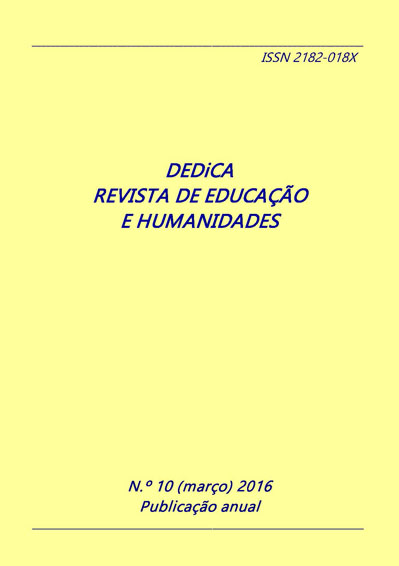Estrategias expresivas, interdisciplinariedad y convivencia desde la Educación Musical
DOI:
https://doi.org/10.30827/dreh.v0i10.6862Palabras clave:
estrategias expresivas, interdisciplinariedad, convivencia, músicaResumen
El Proyecto “Estrategias expresivas, interdisciplinariedad y convivencia desde la Educación Musical” activo desde el curso 2013-2014, pretende incidir de forma especial en algunos aspectos abordados en los años anteriores, privilegiando la participación de las diferentes disciplinas que conviven en el campo educativo.
A partir de la experimentación y mediante el trabajo sobre algunos aspectos comunes a distintas disciplinas como las matemáticas, la literatura y la música, el alumnado se acerca al conocimiento de las posibilidades expresivas de cada una de ellas, poniendo en valor la interdisciplinariedad. Todas estas implicaciones motivan al grupo a generar espacios de convivencia mediante un aprendizaje basado en la resolución de problemas (ABP); además, se potencia el aprendizaje por proyectos priorizando las tareas colaborativas y profundizando en aprendizajes experimentales.
Este Proyecto se concreta a partir de iniciativas puntuales como la participación en actividades literarias, musicales y experimentales -matemáticas- realizadas tanto en los centros participantes como en instituciones educativas del medio. La colaboración con el Área de Lengua y Literatura se define en sesiones de interpretación de poesía y música y en un taller de redacción de trabajos académicos. Se incorpora la creación de un Blog como recurso tecnológico educativo, a la vez que herramienta de comunicación, colaboración y de construcción del aprendizaje. Finalmente se busca promover un alumnado crítico y activo en su formación profesional, tanto en el ámbito de la docencia (Facultad de Formación del Profesorado) como en el de la Musicología y áreas afines (Facultad de Filosofía y Letras). La comunicación conjunta de parte del grupo de Innovación presentará los avances y logros de los principales objetivos propuestos, atendiendo a la idoneidad de la utilización de la música como herramienta expresiva e interdisciplinar.
Descargas
Citas
Cabero Almenara, J. (2008). Innovación en la formación y desarrollo profesional docente, en J. Salinas Ibáñez, Innovación educativa y el uso de las TIC, 83-100. Sevilla: Universidad Internacional de Andalucía.
Carmona, J. (2004). Las nuevas tecnologías y la expresión musical, otros lenguajes en la educación. Comunicar, 23, 25-30. Revista Científica de Comunicación y Educación.
Escamilla González, A. (2009). Las competencias en la programación de aula. Infantil y Primaria (3-12 años). Barcelona: Graó.
Morin, E. (1996). Sobre la Interdisciplinariedad. Curso Internacional sobre la Complejidad y la Transdisciplinariedad, 10-15. U.P.B., Unesco, Colciencias, CNRS. Embajada de Francia y Unisalle. Colombia: ICESI, Nº 62 - Enero/Marzo 1997.
Robinson, K. (2012). Busca tu elemento. Aprende a ser creativo individual y colectivamente. Traducido por Roc Filella Escolà. Barcelona: Urano.
Torres Santomé, J. (1994). Globalización e interdisciplinariedad: el curriculum integrado: Madrid: Morata.
Wagner, T. (2010). The Global Achievement Gap. Why Even Our Best Schools Don’t Teach the New Survival Skills Our Children Need—and What We Can Do About It. New York: Basic Books.












